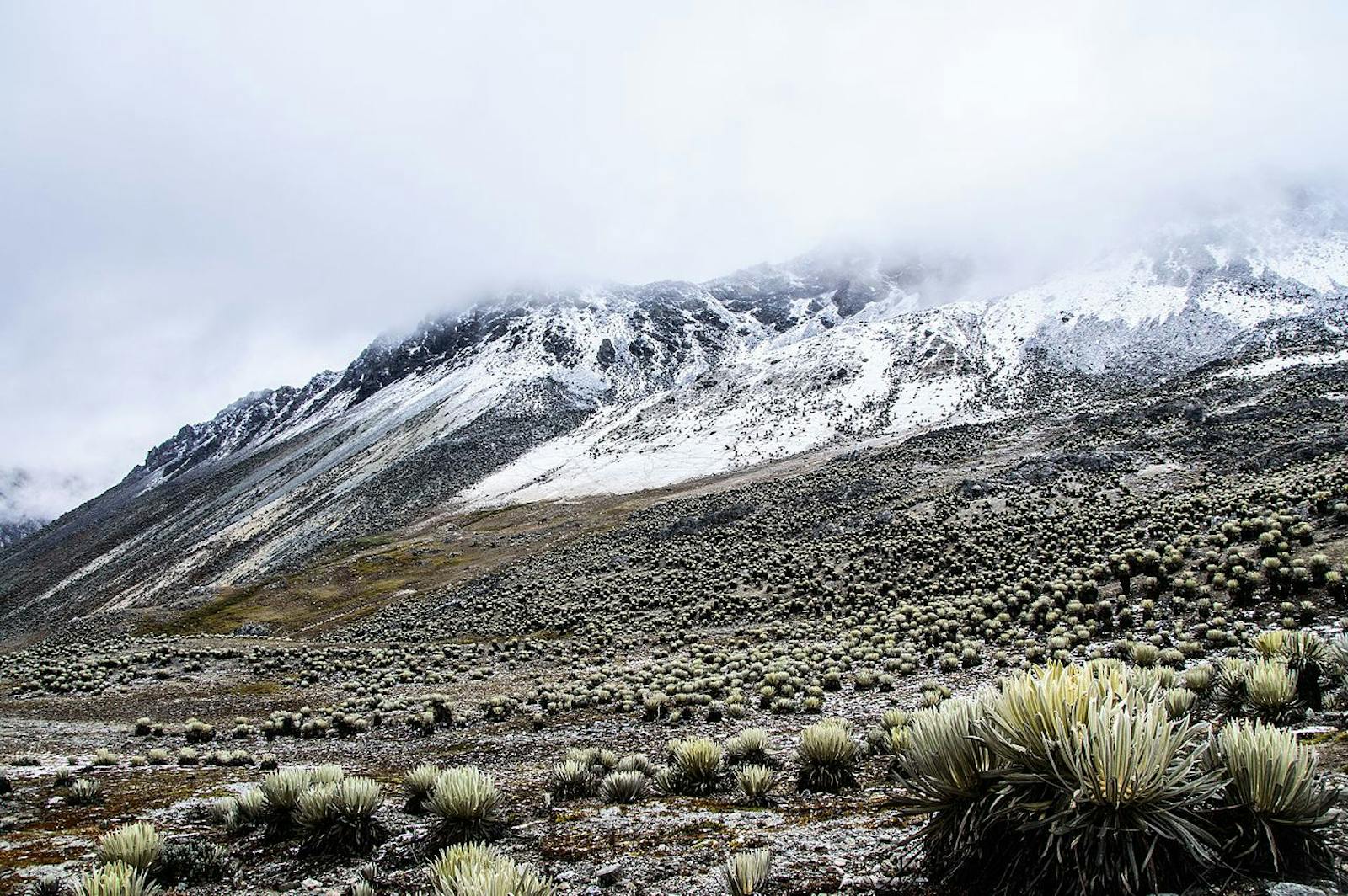Cordillera De Merida Páramo
The ecoregion’s land area is provided in units of 1,000 hectares. The conservation target is the Global Safety Net (GSN1) area for the given ecoregion. The protection level indicates the percentage of the GSN goal that is currently protected on a scale of 0-10. N/A means data is not available at this time.
Bioregion: Andean Mountain Forests & Valleys (NT11)
Realm: Southern America
Ecoregion Size (1000 ha):
282
Ecoregion ID:
591
Conservation Target:
100%
Protection Level:
8
States: Venezuela
The beautiful and endangered Mucubají butterfly is strictly endemic to this ecoregion, occurring only within the confinements of the Cordillera de Merida paramo habitat type. This butterfly is known for their pronounced sexual dimorphism: compared to males, the females of this species have a much larger abdomen that is associated with egg production, and they are often flightless. The protection of high elevation shrubland/grassland habitat this species specialize in is therefore essential to its survival. Very little is known of the species ecology.
_1_neomapas%20(via%20iNaturalist).jpg)
The flagship species of the Cordillera De Merida Páramo ecoregion is the Mucubají butterfly. Image credit: Creative Commons
The Cordillera de Mérida Páramo ecoregion consists of specialized high elevation grassland communities which occur in three distinct oblong patches. The elevation ranges between the mean treeline (3,000 m) and the mean snowline (4,000 m) of the highest peaks in the Northern Andes of western Venezuela. It sits northeast of the city Mérida, flanking both the eastern and western slopes and tops of the highest peaks.
Precipitation ranges between 500–1,000 mm/year with the dry season (December–March) accumulating under 80 mm. Snowfall is common in the higher elevations, especially during the wet season, although little accumulation occurs. The mean temperature also varies along the elevation gradient. The mean annual temperature at 4,000 m is 2.8ºC with a daily fluctuation of 6ºC. At lower elevations, the day time temperature reaches 21ºC but can drop to 0ºC at night.
This ecoregion hosts a number of wetland communities including marsh and cushion bogs and many transitional forest vegetation types, but the core of this ecoregion falls under dry paramo and of herbaceous vegetation growing in clusters. The most characteristic plant in the desert páramos are the spectacular giant rosettes of Espeletia, which intermingles with scattered dwarf cushions, sessile rosettes, and lichens, which dot the barren ground. These stands provide critical habitat for species that specialize in elevational microclimates.
Lower elevations incrementally yield a transitional zone between semi-open meadow, subpáramo, shrub and elfin forests, and eventually ombrophilous montane forests. Polylepis forests are an important component of this transition zone. Plant diversity and endemism are both high for a grassland and shrub community.
These high elevation páramo communities are characterized by many endemic and restricted range species of flora and fauna and represent an ecosystem unique to the high Andes of tropical America. Additionally, it is the headwaters to many nationally and internationally important rivers and streams.
Bird diversity is low compared to the surrounding montane forests but it hosts the endemic insect-eating bearded helmetcrest hummingbird, ochre-browed thistletail, and the Mérida wren. This ecoregion is also host to many mammals. The lower portions, woodland, and grassland mosaics are home to the endangered spectacled bear and mountain tapir in low densities.
Historically, this ecoregion is utilized by humans for grazing and are currently threatened by encroaching human populations. Due to the proximity of large developed areas such as Mérida, páramo vegetation and associated communities are receding into smaller patches. Several protected areas lie within the boundaries of and between this and neighboring ecoregions. These include the following National Parks (IUCN Category II): Sierra Nevada, El Tama, Guaramacal, Páramos El Batallón y La Negra, Sierra de la Culata, and Tapo-Caparo.
Specific threats to this ecoregion include conversion to agriculture and cattle grazing, road construction, and general development. Additional influences include the collection of fuelwoods and building materials.
The priority conservation actions for the next decade will be to: 1) encourage greater enforcement of resource management in livestock grazing areas; 2) increase buffer zone protection from urban development; and 3) educate & encourage sustainable harvesting of resources.
Citations
1. Baquero, A. 2018. Western South America: Along the Pacific coast of Ecuador https://www.worldwildlife.org/ecoregions/nt0214 Accessed October 4, 2018
2. Parker, T.A. and J.L Carr (editors). 1992. Status of Forests Remnants in the Cordillera de la Costa and Adjacent Areas of Southwestern Ecuador. Rapid Assessment Program, Conservation International
3. Dodson C.A. and A. Gentry. 1993. Extinción biológica en el Ecuador occidental, In P.A Mena and L. Suárez (editors), La Investigación para la Conservación de la Diversidad Biológica en el Ecuador. EcoCiencia. Quito.
4. BirdLife International. 2016. Atlapetes pallidiceps. The IUCN Red List of Threatened Species 2016: e.T22721487A94713203. http://dx.doi.org/10.2305/IUCN.UK.2016 3.RLTS.T22721487A94713203.en. Accessed October 4, 2018



